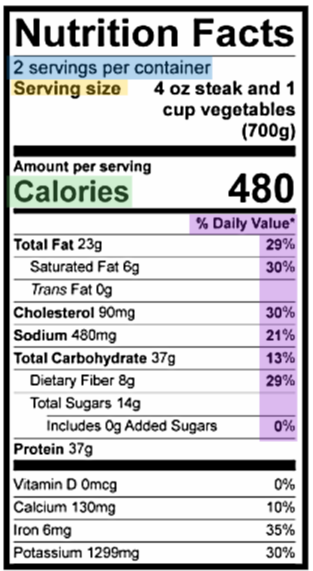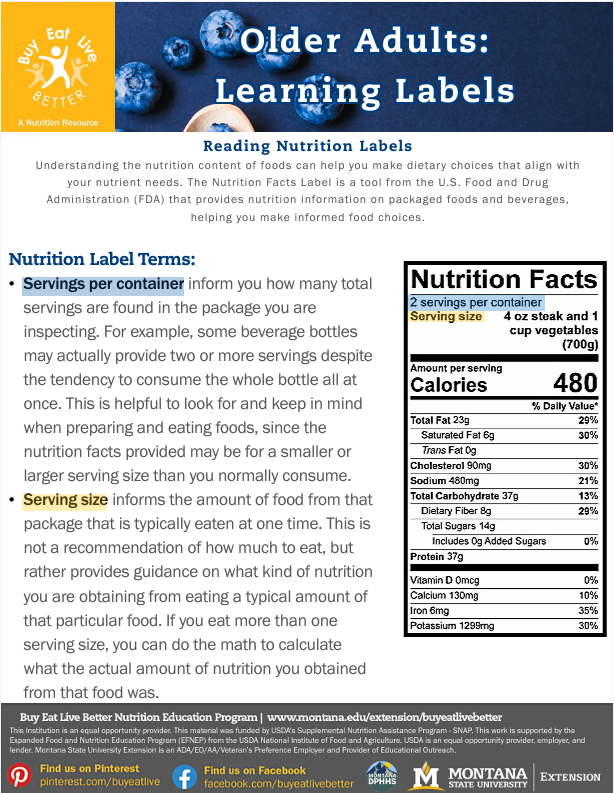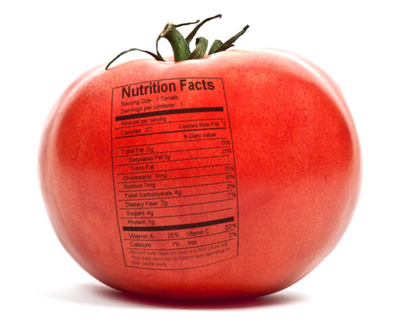Nutrition Label Terms:
- Servings per container inform you how many total servings are found in the package you are inspecting. For
example, some beverage bottles may actually provide two or more servings despite
the tendency to consume the whole bottle all at once. This is helpful to look for
and keep in mind when preparing and eating foods, since the nutrition facts provided
may be for a smaller or larger serving size than you normally consume.
- Serving size informs the amount of food from that package that is typically eaten at one time.
This is not a recommendation of how much to eat, but rather provides guidance on what
kind of nutrition you are obtaining from eating a typical amount of that particular
food. If you eat more than one serving size, you can do the math to calculate what
the actual amount of nutrition you obtained from that food was.
- Calories are the total amount of energy you are receiving from one serving of that food. Your
body requires calories to fuel many functions including breathing and pumping blood,
not just physical activity. Matching the amount of calories you consume to the amount
you typically burn in a day can help you maintain and manage your weight. Nutrition
labels use 2,000 calories/day as the general guide for adult caloric needs, but calorie
needs may vary based on the individual.
- % Daily Value (%DV) represents how much of a nutrient in a serving of that food contributes to the total
daily recommended needs. %DV can be used to estimate if a food is high or low in a
certain nutrient. For example, if you are looking at increasing your fiber intake,
a food with 10% DV of dietary fiber would get you to 10% of your daily dietary fiber
needs.
MSU Extension
Nutrition Education Program
Montana State University
235 Culbertson Hall
P.O. Box 172235
Bozeman, MT 59717-2235
 You may require Adobe Acrobat Reader to view the PDFs on this page.
You may require Adobe Acrobat Reader to view the PDFs on this page.




 You may require
You may require